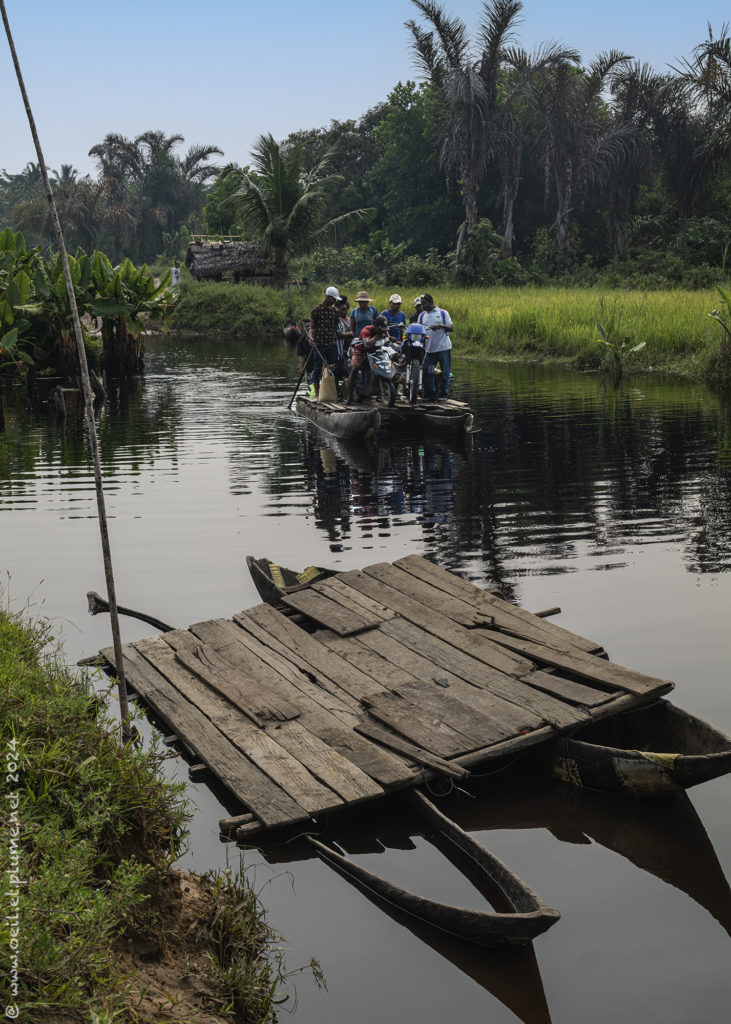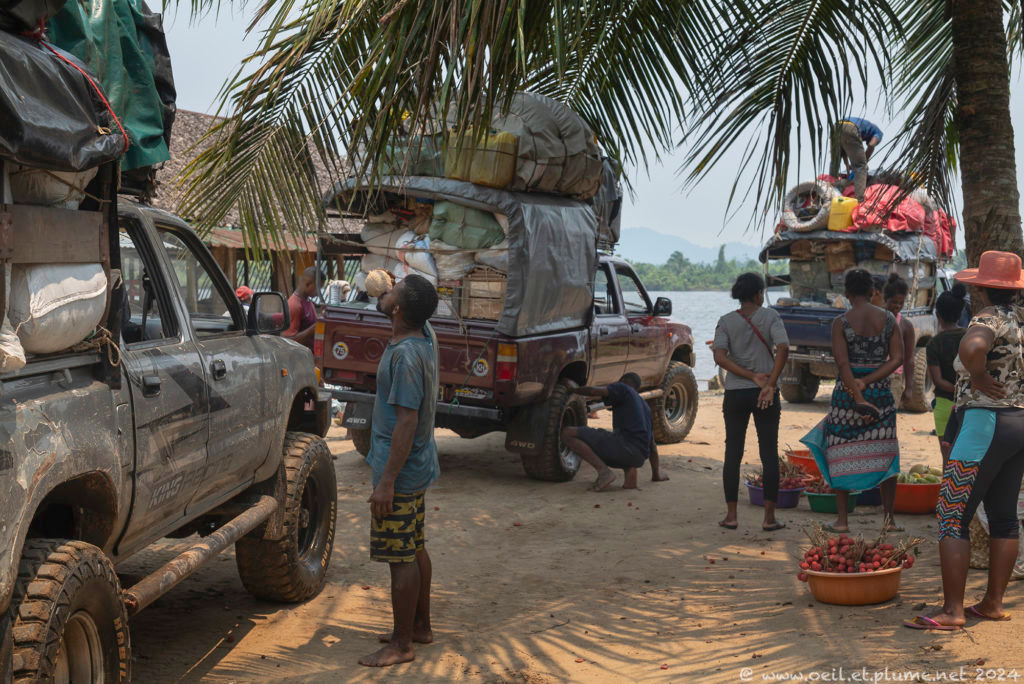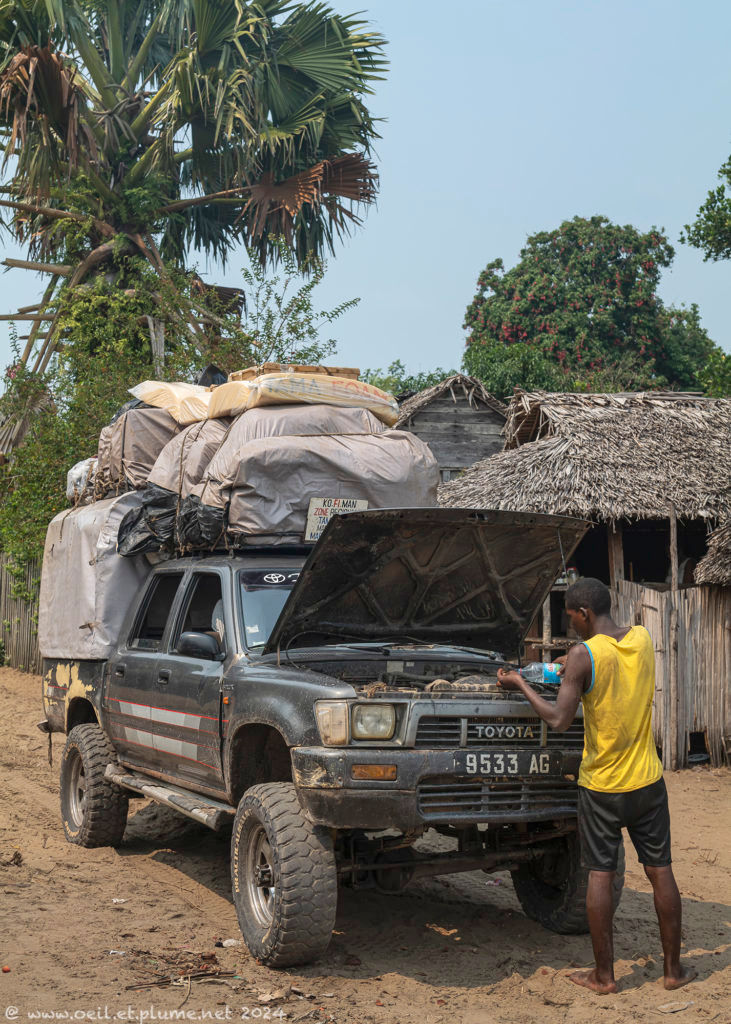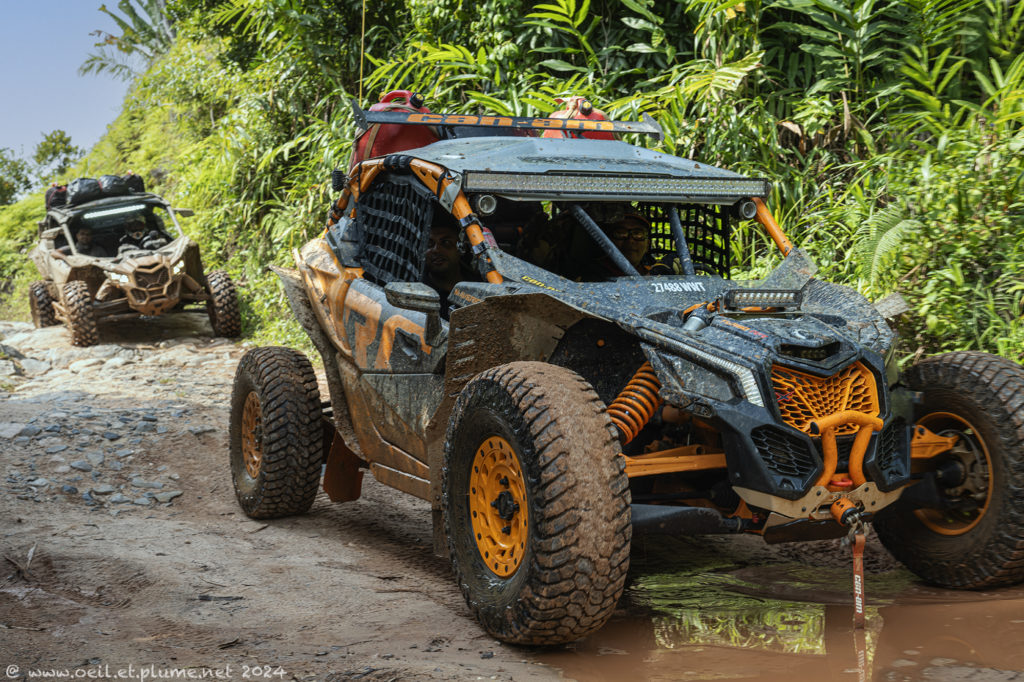Madagascar’s primary highway #5 (Route Nationale 5, hereafter RN5) connecting Taomasina (Tamatave), Sonierana-Ivongo, Mananara and Maroansetra further north in the eastern coast is notorious for its poor condition, as it is abundantly reported online.
Controversial RN5
To start with, the RN5 infrastructure barely qualifies to a national road grade beyond the 160 km of asphalted cover between Tamatave and Sonerana-Ivongo. Furthermore, the modest road lacks maintenance and suffers from severe floods during the rainy season. Last but not least, the travel entails many water crossings with precarious floating platforms.
The situation is paradoxical, as Mananara and Maroansetra are wealthy areas producing large amounts of export-quality cloves and vanilla, while Tamatave hosts the national main seaport. Although people and good transportation between those areas and Tamatave takes place also by sea, the societal need for a well-built and well-maintained RN5 remains undisputed.
A few years ago, a vocal member of the national Parliament lamented that the numerous potholes on the asphalted section of the RN5 between Tamatave and Sonierana-Ivongo were large and deep enough to be depicted as “nids-de-dinosaures” rather than “nids-de-poule”.
Since then, some maintenance work took place on the aforementioned asphalted section. North of Sonierana-Ivongo, an ambitious road project attributed to a Chinese company was launched to upgrade the dirt track into a real primary highway. The ongoing infrastructural work does not include the worst sections of the itinerary close to Mananara.
For the time being, the RN5 remains so challenging to travel that expedition companies run guided or self-driving adventure tours with 4×4 pick-ups. Customers are mostly foreigners.
My RN5 experience
I recently travelled the RN5 in order to visit Mananara and Maroansetra areas. From Sonierana-Ivongo to the north, a local friend and I hired two moto-taxis, before returning south to Sainte-Marie island aboard a merchant boat. The rough but exhilarating experience is really worth of sharing hereafter.
To ride the some 250km of the RN5 between Sonierana-Ivongo and Maroansetra took us two full days with an overnight stay in Mananara. The road consists in sections of sheer rock, deep sand and everything in-between, particularly mud during the rainy months of the year. The itinerary entails no less than 13 river crossings.
Moto-taxis are agile in difficult terrains and on narrow roads. Unlike 4×4 pick-ups, motor bikes can cross the water sections on rudimentary platforms placed on top of twin pirogues instead of waiting for the rarer and slower ferries. Our travel took place early December, banking on rather dry conditions. During the rainy season, the full journey aboard a 4×4 pick-up can take up to five days.
My driver Alex
What follow is not a day-by-day sequential account of my RN5 journey. The two posts paint some key themes that I found particularly illustrative of the experience. Let me first present you Alex, my moto-taxi driver. I developed quickly solid amicable bonds with this discrete gentleman and awesome driver.
Alex’s motor bike was strong but tired. The tachymeter was out of order, which was probably a good thing for me as I could not know precisely how fast we fared on difficult terrains. The horn was no longer functional too, which prompted all kinds of alternative actions to alert pedestrians and other road users about our presence.
I confess that sometimes, I reached the limits of my trust in my experienced driver. I developed coping strategies like to release voluntarily my cap in the air to the ground to suggest implicitly that we were riding too fast. Alex was then keen to slow down, for a while at least. Despite all driving challenges, we never fell to the ground during our adventurous journey.
Water crossings
When reaching a water crossing point, 4-wheel and 2-wheel vehicles regroup to wait for the passage, which nurtures colourful local businesses. On my end, I did not miss to savour locally-brewed coffee whenever possible.
Rocky mountains
On our way, we crossed beautiful rural landscapes, including wide and flat expanses of farmland. However, flat and even terrain proved to be rather the exception than the rule during our first ride day.
At times, the road conditions were so rough that I simply walked for a while, which created also some terrific photographic opportunities. The sudden encounter with a convoy of fully-equipped 4X4 expedition buggies was one of them as it contrasted so much with our modest transportation means.
After a long and physically-demanding ride, we climbed the last leg of the itinerary before reaching Mananara for the overnight. The task was made harder with the rain that started pouring on the clayed soil which becomes very slippery when wet. I still wonder how we managed to get through safely.
Mananara’s social life
We rested two days in Mananara for the week-end, in order to enjoy also the vibrant local life. As clove harvest was ongoing in the region, many people from neighbouring rural communities flocked into the town with their annual production. Part of the money obtained from the sale was quickly spent in a variety of domestic purchases. Another important part fueled leisure activities, including nightlife indeed, but also cockfighting and morengy.
Cockfighting
A flock of motorbikes parked in front of a closed area attracts my attention: this is a public arena for cockfighting. Cockfighting in Madagascar was probably imported from Southeast Asia, where it is very popular. Cockfighting involves roosters held in a closed perimeter called cockpit. Roosters are piloted and take care of by their respective jockeys.
I am not long to join the small but loud crowd. In practice, only men attended the event. The ambiance is quite passionate, fed by the fighting itself, the oral provocations traded by various groups of spectators, not to mention the financial wagers on the outcome of the matches.
The fight can be long and painful for the cooks. In certain parts of the world, it can lead to a critical injury or even to the death of a cock. In Mananara, the fight ended as soon as one of the rooster would avoid or abandon the fight. Fighting cooks are too much valued financially to be let to die on a fight.
Sitting with the audience, I am requested many times to take side and to bet on a cock, which I decline firmly. I was keener to observe fighters and audience in their respective roles. Anyway, it is time for me to experience another fighting competition in Mananara.
Morengy
Morengy (spellt also moraingy en English) is the traditional Malagasy boxing. The martial art was developed since the 17th century in Madagascar, before spreading over in the neighbouring countries or islands. Morengy is practiced unarmed, bare-fisted. It consists in mostly punches complemented by foot kicks. It is very popular in the north-eastern part of Madagascar.
The fight is not only physical, but also mental. Mental concentration, calls for support to the supporters, oral provocation of the adversary are widely used to gain ascendance and to secure victory.
As the cockfighting, morengy fighting strongly partitions the audience into two camps; it entails also financial bets on the expected winner, but to a lesser extent than cockfighting.
Senior morengy fighters are socially very respected in Madagascar. The best ones make a comfortable living out of the practice of their martial art. For the many others, it remains a complementary activity. For us, it is time to leave the fighting area to prepare for the second leg of our RN5 journey to Maroansetra.
To continue here.
Cheers,































